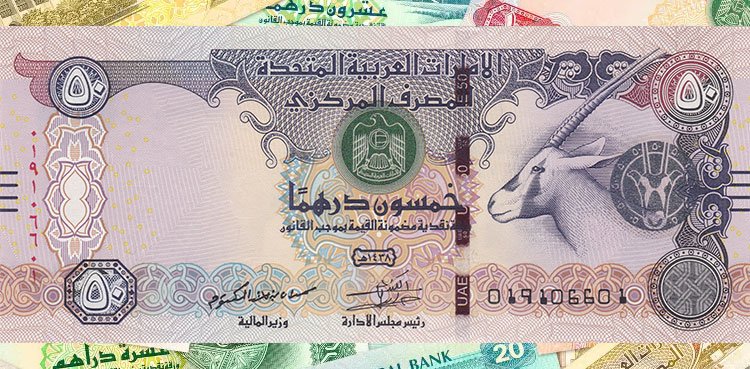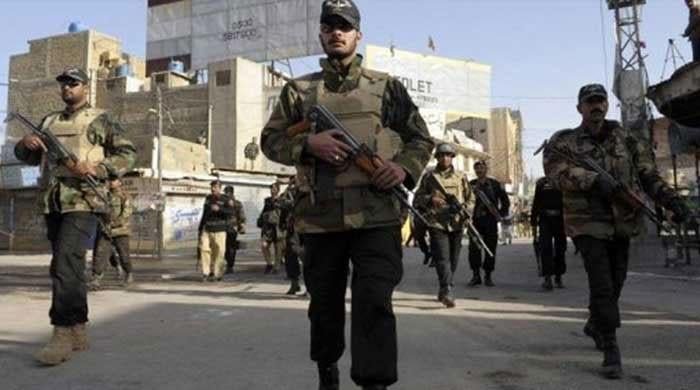Dubai/Karachi April 26, 2025 – The UAE Dirham (AED) has seen a slight uptick in its valuation against the Pakistani Rupee (PKR), trading at 76.49 PKR today compared to yesterday’s rate of 76.46 PKR.
This modest increase underscores the UAE’s robust economic fundamentals and its growing influence in the global financial landscape, while highlighting the economic dynamics affecting Pakistan’s currency.
1 UAE Dirham= 76.49 Pakistani Rupees
Currency Valuation Process
The exchange rate between the AED and PKR is determined by the foreign exchange market, where currencies are traded based on supply and demand dynamics. The UAE Dirham, pegged to the US Dollar at a fixed rate of approximately 3.67 AED to 1 USD, enjoys relative stability due to this linkage. The US Dollar’s performance in global markets directly influences the Dirham’s value, providing a predictable foundation for its exchange rates.
In contrast, the Pakistani Rupee operates under a managed floating exchange rate system, where its value is influenced by market forces and periodic interventions by the State Bank of Pakistan. Several factors drive the AED-PKR exchange rate:
- Economic Performance: The UAE’s diversified economy, bolstered by sectors like oil, tourism, real estate, and finance, attracts significant foreign investment, increasing demand for the Dirham. Pakistan, meanwhile, faces challenges such as inflation, trade deficits, and limited foreign reserves, which can weaken the Rupee.
- Interest Rates: Higher interest rates in the UAE draw foreign capital, strengthening the Dirham. Pakistan’s monetary policy, aimed at controlling inflation, can lead to volatility in the Rupee’s value.
- Trade Balances: The UAE’s trade surplus, driven by oil and non-oil exports, supports the Dirham. Pakistan’s trade deficit exerts downward pressure on the Rupee.
- Political and Global Factors: The UAE’s stable political environment enhances investor confidence, while Pakistan’s economic stability is occasionally affected by domestic and geopolitical developments. Global oil prices and market trends also play a role, given the UAE’s position as an oil exporter.
Today’s slight rise in the AED-PKR rate reflects the UAE’s economic resilience compared to Pakistan’s ongoing financial challenges. The increase benefits Pakistani expatriates in the UAE, as their remittances yield more Rupees, and supports bilateral trade by making UAE goods more competitively priced for Pakistani importers.
UAE’s Economic Stability Policies
The UAE’s economic stability is a result of visionary leadership and strategic policies that have transformed the nation into a global economic hub. Under the guidance of Sheikh Mohammed bin Rashid Al Maktoum and Sheikh Mohamed bin Zayed Al Nahyan, the UAE has pursued initiatives to diversify its economy and reduce reliance on oil. Key policies include:
- Economic Diversification: Initiatives like Expo 2020, the Green Economy Strategy, and Abu Dhabi Economic Vision 2030 have expanded sectors such as tourism, finance, and technology. The UAE’s thriving real estate market and world-class infrastructure attract global investors, boosting demand for the Dirham.
- Investor-Friendly Regulations: The UAE offers tax incentives, free zones, and streamlined business processes, fostering foreign direct investment. This capital inflow strengthens the Dirham and supports economic growth.
- Monetary Stability: The Central Bank of the UAE maintains the Dirham’s peg to the US Dollar, ensuring predictability in international trade and investment. Prudent fiscal policies and substantial foreign reserves further enhance confidence in the currency.
- Innovation and Sustainability: Investments in renewable energy, artificial intelligence, and smart cities position the UAE as a leader in sustainable development. These efforts attract long-term investment, reinforcing economic stability.
These policies have created a resilient economy capable of weathering global uncertainties, as evidenced by the Dirham’s steady performance against currencies like the PKR. The UAE’s large Pakistani expatriate community, contributing an estimated $3.1 billion in remittances in February 2025 alone, benefits significantly from this stability, as each Dirham sent home translates into more Rupees.
Introduction to Pakistani Rupee and UAE Dirham
The Pakistani Rupee (PKR), abbreviated with the symbol ₨ or Rs, is the official currency of Pakistan, issued by the State Bank of Pakistan. Introduced in 1947 following Pakistan’s independence, the Rupee is subdivided into 100 paise, though paise coins are no longer in circulation. The PKR is used across all regions of Pakistan, from urban centers like Karachi and Lahore to rural areas. Its value is influenced by domestic economic conditions, including inflation, foreign reserves, and trade balances, as well as global market trends. The Rupee is not widely accepted outside Pakistan, requiring travelers to exchange it before leaving the country.
The UAE Dirham (AED), symbolized as د.إ or Dhs, is the official currency of the United Arab Emirates, a federation of seven emirates including Dubai and Abu Dhabi. Established in 1973, the Dirham replaced the Qatar and Dubai Riyal and is issued by the Central Bank of the UAE. Subdivided into 100 fils, the Dirham is pegged to the US Dollar, ensuring stability in international transactions. Widely used across the UAE, it is occasionally accepted in tourist areas of neighboring countries, reflecting the UAE’s status as a regional business hub. The Dirham’s strength is underpinned by the UAE’s diversified economy and strategic economic policies, making it a symbol of the nation’s financial prowess.
The slight rise of the UAE Dirham to 76.49 PKR today highlights the UAE’s economic strength and the effectiveness of its policies in maintaining currency stability. As the UAE continues to innovate and diversify, its Dirham remains a beacon of reliability in global markets. For Pakistan, the exchange rate reflects ongoing economic challenges, yet the strong Dirham offers tangible benefits for its expatriates




